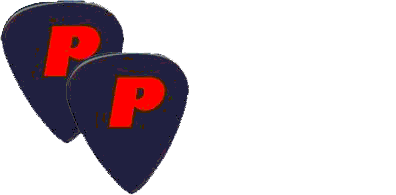Doc Watson Swings Western
Article in last Sunday’s New York Times about TIME JUMPERS, a group of plus-or-minus 11 Nashville heavies doing ‘30’s and ‘40’s Western Swing just for fun of it. Their music’s good and they’re getting media exposure and recording ops. Read the [NY Times, Sunday, May 14, 2009] if you want to know more about them.
But if you want to get a taste of how DOC WATSON handled Western Swing, listen to this clip from Steel Guitar Rag
It’s from my personal, unreleased trove of Doc and me playing together around 1966 or ’67 (I was his back-up guitarist when he played Southern California). We were rehearsing in guitar-maker Roy Noble’s workshop for a show that nite.
Actually, we didn’t play Steel Guitar Rag on stage then, so I guess we weren’t technically rehearsing it. In fact, I have a slew of Doc’s Western Swing stuff, some of which never made his set-lists.
In the mid-‘60’s, Doc was still feeling his way around working solo. He’d been playing with Clarence Ashley for a couple years before he went on his own. Clarence Ashley’s band, with Clarence on banjo and vocals, Fred Price on fiddle, Clint Howard on backup guitar and vocals, and Doc, is still my #1 Hall of Famer in the string band category. I recorded them at the Ash Grove in, I think, 1965, on my workhorse Wollensak, because I knew I’d want to listen to them again and again, for the rest of my life.
Anyway, when Doc decided to go it alone he wasn’t sure who his audience would be. He knew it would include folkies, as well as hard-core devoteés and scholars of Anglo-American genre music. But he wasn’t sure about Western Swing; maybe not folky enough, too corny, etc.
Many fans saw, and probably still see, Doc as one of the last men standing to play “mountain music.” But Doc could and did play electric guitar in bands that worked bars and such around Deep Gap, NC, where he lives. These bands played the popular music of the day, plus tunes like Steel Guitar Rag and Rose of San Antone, both Western Swing faves. But I doubt if Doc ever played old-timey music with them. And even if he did, he didn’t make enough money on that circuit to “get off the dole,” as he put it.
So, when the opportunity to join Clarence Ashley’s band and be part of the folk music revival he jumped in with both feet.
But that band did play the traditional stuff, banjo-fiddle duets, reels, work songs-your basic old-timey canon, which Doc did and does play better than any other guitarist I can think. But this is about him and Western Swing, and Clarence Ashley’s band was no place to be playing Step It Up and Go or Sheik of Araby.
Anyway, something went down between him and Clarence in the middle-‘60’s and Doc found himself a solo act. And that’s where I came in. He stayed at my house, and, in an old guitar mentor-disciple tradition, I was his lead-boy. Among my duties was helping him decide what to play or not play on stage.
He had a vast repertoire of material and styles, including Western Swing, but he was reluctant to put songs from that genre in his master set-list. But one afternoon, well into his run at the Ash Grove, we decided, together, that he would play Step It Up and Go and I’ll See You in My Dreams that nite.
He did. The reception was thunderous. In retrospect, how could it have been otherwise? I mean, I’ll See You in My Dreams finger-picked on a Dreadnought guitar with high action, jumbo strings, the right chords and everything? Give me a break.
Yes, I know, Merle Travis and Chet Atkins did it, but that’s just the point: they did it on electric guitars, although with awesome technique. But they sounded more or less like Les Paul, breathtaking but dated and fusty. In other words: Dexterity 10, Charm 0. Doc’s version and his medium-acoustic guitar-oozed charm.
I’m pretty sure that was an important night for Doc. For one thing, it gave him the high sign to go ahead and expand his repertoire by a whole other musical world. For another, it allowed him to demonstrate his deep knowledge of music not usually associated with fiddle tunes and I-IV-V chord progressions.
It was sure a big nite for me. Playing with Doc on and off stage was always nothing but thrilling. But feeling like I might have had something, no matter how small, to offer the man who was, and still is, the dominant music figure in my life, makes me smile even now, more than 40 years after the fact.

